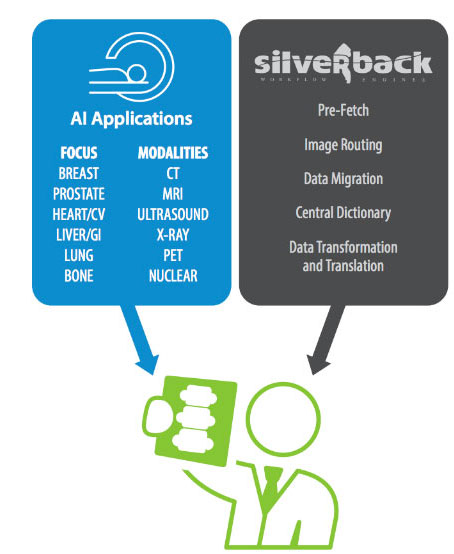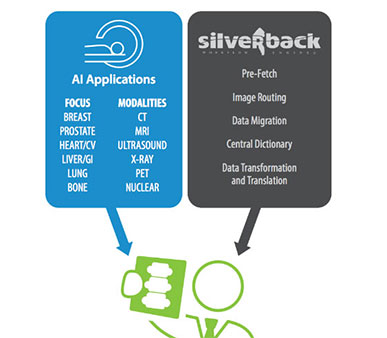This is the first in a three-part blog series on use cases for artificial intelligence in imaging. Access part two and part three.
The presence of medical imaging is felt at nearly every touch point of the patient experience across all healthcare settings. Physicians use MRI to diagnosis injuries in the emergency department. Surgeons use x-ray to guide their instruments in the operating room. Cardiologists use ultrasound to monitor the progression of chronic heart disease.
Imaging is everywhere, and the demand is only growing. In the United States specifically, patient population changes are driving an increase in medical imaging, both necessitated by providers and demanded by patients, including:
- A rapidly aging population that will require more care
- Lifestyle and diet changes leading to more prevalent chronic diseases, such as cardiovascular disease, that call for more frequent monitoring
- Advances in early-stage treatments that require earlier detection and diagnosis
- Equipment advances that have opened up more use cases for imaging
- An increase in the tens of millions of images every year classified as “unnecessary”
This demand for medical imaging is creating a burden on data storage, too. The amount of data per study has grown nearly 4x in the past decade alone, and medical imaging is expected to soon account for 30% of the overall health data storage volume.
Imaging 3.0: The Move from Reading Radiologists to Radiology Consultants
To address the challenges, in part, the American College of Radiology has developed the Imaging 3.0 Initiative, which sets a framework for moving away from volume-based imaging to a value-based model. Whereas Imaging 2.0 of the past three decades focused on improved interpretation with a boom of technological advances, Imaging 3.0 positions radiology as an integral part of the patient care team.
Imaging is at the heart of the integrated service environment, giving radiologists a unique position to influence outcomes. As a critical component in diagnosis, treatment, aftercare and monitoring, radiology deserves a seat at the integrated care team table, not in the background reading studies.
By moving from back-office interpreters to patient-facing consultants, radiologists can contribute more to the patient-centered care conversations with physicians and the patients themselves. But this expanding and evolving role will place a heavier burden on the radiologist’s workload, driving even greater needs for efficiency gains.
The Answer: Streamline Study Reading with Artificial Intelligence

The SilverBack platform enables AI solutions that put the radiologist first, with improved workflow efficiencies and decision support pathways.
AI can help radiologists expedite study reading by handling repetitive tasks in a fraction of the time with increased precision. The benefits of AI are undeniable and are already being realized by radiologists worldwide. Some capabilities of imaging AI include:
- Fully automated medical image analysis and reporting
- Precision measurements
- Automated image registration
- Intelligent image search
- Similarity assessments
- Identification of false negatives and false positives
With the right integrations, AI will make study reading more efficient for radiologists, freeing them to take on more value-added activities and the increasing demands of Imaging 3.0.
More time spent with referring physicians and patients will ensure all parties are better educated to make the best decisions, and that advanced imaging technologies are used to their full potential during and after the patient encounter.
Leading Edge Technology for Imaging AI
DataFirst supports the American College of Radiology’s Imaging 3.0 Initiative by delivering systems that enable AI applications to work across modalities, optimizing practice management and patient care.
If you’re ready to take action, DataFirst can help.
Connect with us online or call 800-634-8504 to get started.



